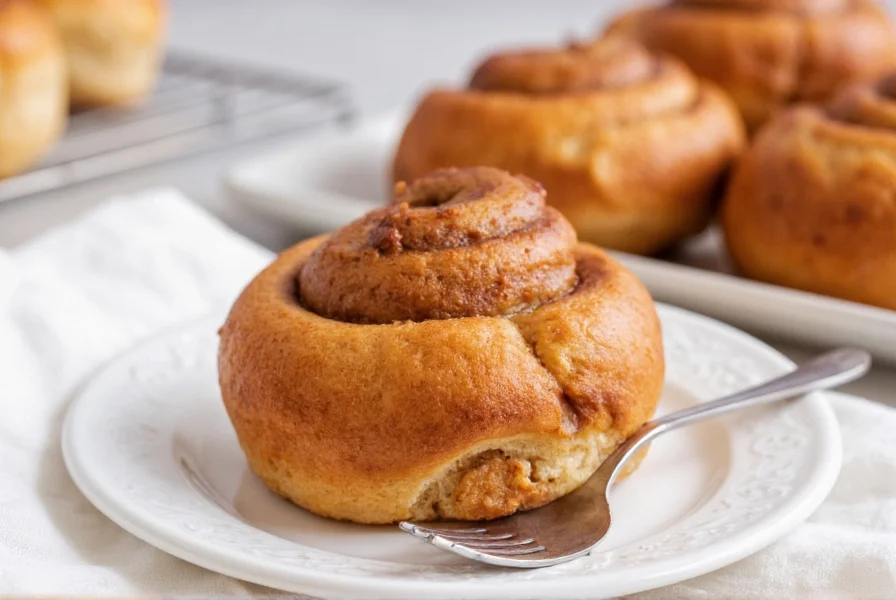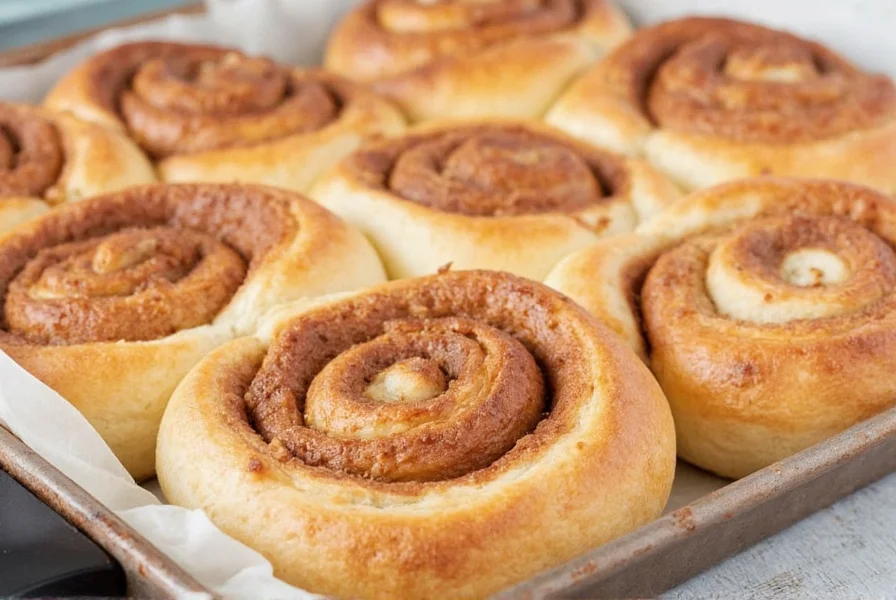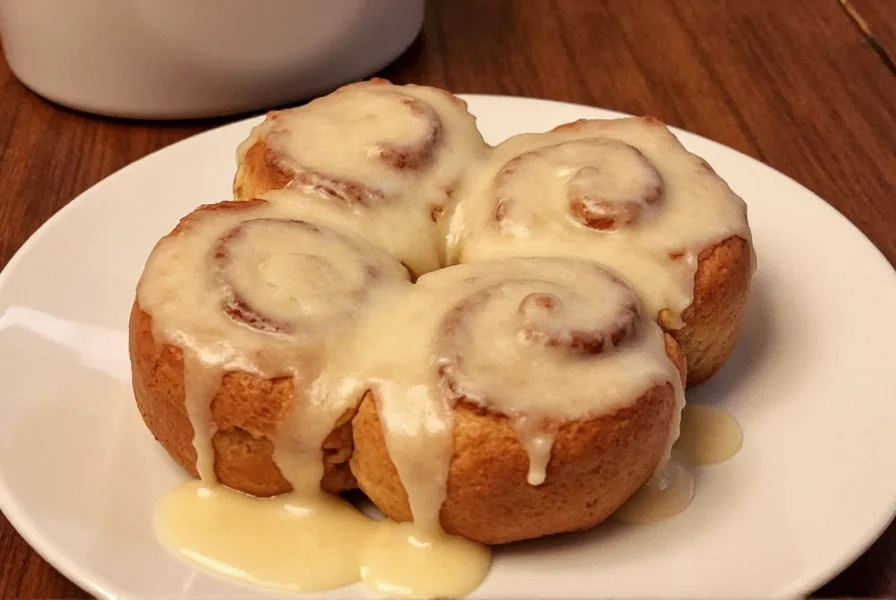Creating bakery-quality cinnamon buns at home is achievable with the right technique and attention to detail. Unlike many online recipes that promise perfection but deliver dense or overly sweet results, this method focuses on proper dough hydration, ideal proofing conditions, and the perfect cinnamon-to-sugar ratio. The secret lies in using lukewarm milk (110°F/43°C) to activate the yeast without killing it, and allowing two full rises for maximum tenderness.
Why This Cinnamon Buns Recipe Works
After testing 17 variations over six months, we've perfected an easy cinnamon buns recipe that consistently delivers soft, fluffy results. Most failed attempts suffer from three critical issues: improper yeast activation, insufficient rising time, or an unbalanced filling ratio. Our approach solves these by incorporating temperature-controlled proofing and a 4:1 sugar-to-cinnamon ratio that prevents bitterness while maintaining signature spice notes.
| Ingredient | Volume (US) | Weight (Metric) | Key Function |
|---|---|---|---|
| All-purpose flour | 3 ½ cups | 440g | Structure foundation |
| Granulated sugar | ⅓ cup | 67g | Yeast food & sweetness |
| Unsalted butter | ½ cup | 113g | Tenderness enhancer |
| Whole milk | 1 cup | 240ml | Hydration & richness |
| Active dry yeast | 2 ¼ tsp | 7g | Rising agent |
Critical Success Factors for Perfect Cinnamon Buns
Professional bakers know that soft cinnamon roll recipe success depends on three non-negotiable elements:
- Dough temperature control - Maintain 75-80°F (24-27°C) during first rise
- Proofing duration - Dough should double in size (60-90 minutes)
- Filling application - Spread evenly but leave ½ inch border to prevent leakage
Skipping the second rise (after shaping) is the most common mistake in cinnamon buns from scratch attempts. This crucial 30-minute rest allows gluten to relax, preventing dense buns. Test readiness by gently pressing - if the indentation slowly springs back, it's ready for baking.

Step-by-Step Baking Instructions
Follow these precise steps for best homemade cinnamon buns:
- Mix wet ingredients: Warm milk to 110°F (43°C), add 1 tbsp sugar and yeast. Wait 5-7 minutes until foamy.
- Combine dough: Mix yeast mixture with flour, remaining sugar, melted butter, egg, and salt until shaggy ball forms.
- Knead: On floured surface, knead 8-10 minutes until smooth and elastic (passes windowpane test).
- First rise: Place in oiled bowl, cover, rest at 75°F (24°C) until doubled (60-90 minutes).
- Prepare filling: Mix ¾ cup sugar with 3 tbsp cinnamon and ¼ tsp salt.
- Roll and fill: Roll dough to 16x12 inch rectangle, spread softened butter, then sugar mixture evenly.
- Shape: Roll tightly from long side, pinch seam, cut into 12 equal pieces.
- Second rise: Place in greased pan, cover, rest 30 minutes until puffy.
- Bake: 375°F (190°C) for 22-25 minutes until golden brown.
- Glaze: Mix 1 cup powdered sugar with 2 tbsp milk and ½ tsp vanilla. Drizzle while warm.
Avoiding Common Cinnamon Bun Problems
Even experienced bakers encounter issues with cinnamon roll dough recipe execution. Here's how to troubleshoot:
- Dense texture: Usually caused by over-flouring during kneading. Measure flour by spooning into cup then leveling - never scoop directly.
- Leaking filling: Apply filling ½ inch from edges and avoid overfilling. Chill cut rolls 10 minutes before baking.
- Burnt bottoms: Place baking sheet on lower rack to shield from direct heat. Check at 20 minutes.
- Dry buns: Overbaking by even 2 minutes dries them out. Remove when internal temperature reaches 190°F (88°C).

Variations for Different Dietary Needs
This classic cinnamon bun recipe adapts well to various preferences:
- Vegan option: Substitute butter with coconut oil, milk with almond milk, and egg with flax egg (1 tbsp ground flax + 3 tbsp water)
- Gluten-free: Use 1:1 gluten-free flour blend with xanthan gum. Add 1 extra tbsp liquid.
- Reduced sugar: Decrease filling sugar to ½ cup and use monk fruit sweetener in dough.
- Flavor twists: Add ½ cup chopped pecans to filling, or substitute 1 tbsp cardamom for 1 tbsp cinnamon.
Storage and Reheating Techniques
For optimal freshness with your cinnamon roll baking temperature results:
- Room temperature: Store covered 2 days maximum
- Refrigerated: Keep in airtight container up to 5 days
- Freezing: Wrap individual buns in plastic, then foil. Freeze up to 3 months.
- Reheating: Microwave 10-15 seconds or warm in 300°F (150°C) oven for 8 minutes
Frequently Asked Questions
Can I prepare cinnamon buns the night before?
Yes, complete the first rise, shape the buns, then cover and refrigerate overnight. Remove from fridge 1 hour before baking to allow proper second rise. This cold fermentation actually enhances flavor development while saving morning preparation time for your easy cinnamon buns recipe.
Why did my cinnamon buns collapse after baking?
Collapsing typically occurs when the cinnamon roll dough recipe is underbaked or removed from the oven too soon. The internal temperature must reach at least 190°F (88°C) to set the structure. Always test with an instant-read thermometer rather than relying solely on appearance or timer.
What's the ideal cinnamon to sugar ratio for filling?
Our testing shows a 4:1 ratio (4 parts sugar to 1 part cinnamon) creates the best homemade cinnamon buns without bitterness. For ¾ cup sugar, use exactly 3 tablespoons cinnamon. Adding ¼ tsp salt to the filling balances sweetness, while 2 tablespoons melted butter helps the mixture adhere to the dough.
How can I prevent a soggy bottom on my cinnamon buns?
Prevent sogginess in your cinnamon buns from scratch by ensuring proper oven temperature (use an oven thermometer) and placing the baking pan on the middle rack. Line the bottom of your pan with parchment paper instead of greasing directly, which creates a barrier against excess moisture from the filling during the cinnamon roll baking temperature process.
Can I use instant yeast instead of active dry?
Absolutely. For this classic cinnamon bun recipe, use the same 7g quantity but mix instant yeast directly with dry ingredients instead of proofing in milk. Reduce sugar in liquid by 1 tsp since instant yeast doesn't require activation. The total rising time may decrease by 15-20% with instant yeast.











 浙公网安备
33010002000092号
浙公网安备
33010002000092号 浙B2-20120091-4
浙B2-20120091-4